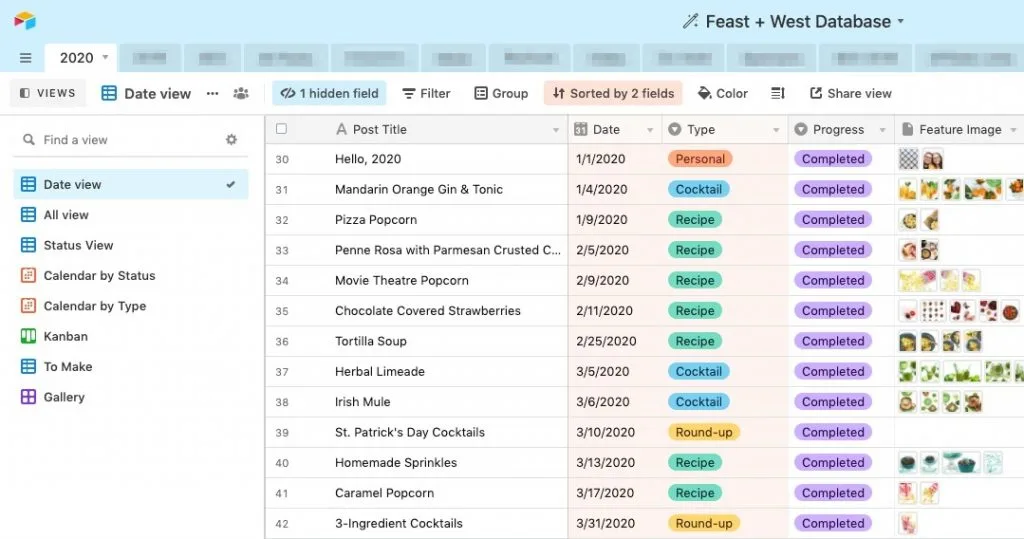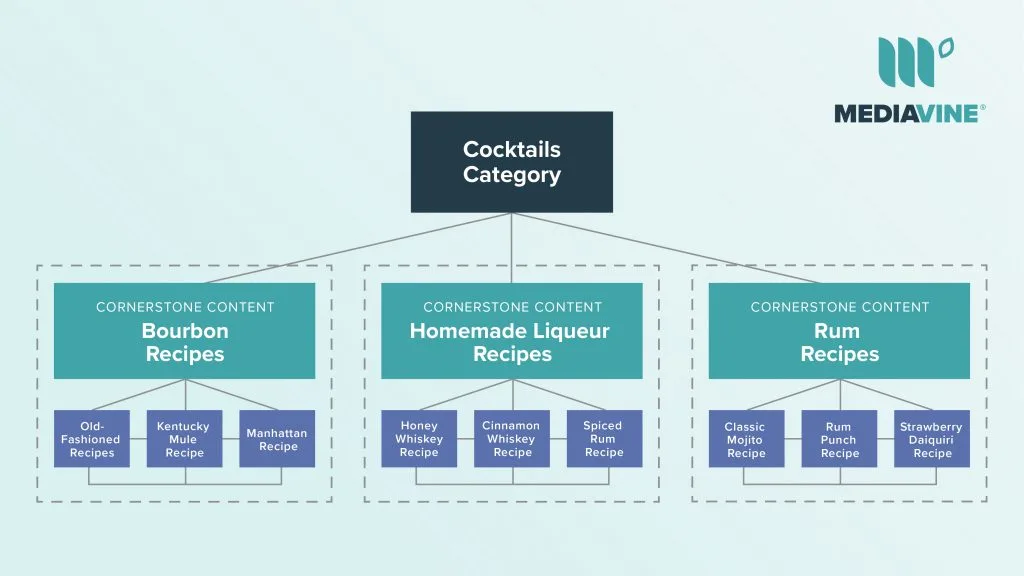How to Create an Editorial Calendar that Balances Your Creative Passion with SEO


Editorial calendars are tantamount to creating successful blog content. Here are four steps to planning a successful content calendar.
If you already have a content calendar, then you know that they are a great way to keep track of upcoming content on your blog. This post will help you add some new strategies to your planning process that incorporates SEO along with your creative passions.
I have kept a calendar for years for my blog Feast + West, and I helped create the calendar we use behind the scenes for the Mediavine blog as well.
This is what helps me see all of my planned content at a glance and balance my creative passion with the SEO side of things. It’s all important for growing traffic and reader retention, but it has to be a balance.
There’s no time like the present to start one! An editorial calendar can help you organize and plan upcoming content.
You might be thinking, “I don’t want more work!” But as we head deeper into Q4, a content calendar can help more than hinder. Yes, it takes a little time to do the planning, but once you know what you’ve got on your plate, it will help you stay organized and on track with everything you want to publish.

In my humble opinion, the best content calendar tool is whatever one you will actually use. If something already works well for you, use that.
Here are a few tools to try if you want to start fresh:
Airtable is what I use for my own blog and what our team uses for the Mediavine blog as well. It is similar to Google Sheets (which I have used, and loved, for my editorial calendar in the past) but Airtable can do so much more.
I love how it can connect data points from tab to tab and that you can toggle on different views, like turning your spreadsheet into a calendar. Here’s a peek at my schedule from earlier this year:

I could nerd out about Airtable for a while (and we actually did just that on an episode of Teal Talk a couple of years ago that we called Organization and Airtable), but let’s get into what needs to go into your editorial calendar.
Blog content should always be a mixture of cornerstone content and new seasonal content aimed at your readers.
Cornerstone content, which our CEO Eric Hochberger wrote about in his SEO Like A CEO series, is the content that’s the foundation of your blog. He says:
The idea is that you’re going to write a ton of long tail keyword-driven content to support the cornerstone content.
For example, I write a lot about cocktails on my blog, so I am often planning more drink content for my readers. Within that category, I have various topics that I am always working on expanding.
In this example, my cocktails category is my cornerstone content, and each new post I write is supporting content that links back to my cocktails category. Like this:

I highly recommend checking out Eric’s post and downloading our Cornerstone Content printable to help you brainstorm some new content to create around your own cornerstone topics.
Evergreen, seasonal content is key to keeping readers engaged, and it can become content you share again in the future. For me, seasonal content is also the fun stuff!
But it all has to be a balance, so if your seasonal content is also supporting your cornerstone content, that is even better!
If you’re anything like me, you probably already have a super long list somewhere of blog posts you want to write, so check that out and pick out a few seasonally appropriate ideas that you’re ready to tackle. As always, do keyword research for every post so it has the best chance of performing well in Search.
If you’re looking for some new ideas, Google Trends and Pinterest Trends are both great tools for looking at seasonal content that’s already generating buzz. (We have a great post about how to use Google Trends written by our co-founder Amber Bracegirdle that is worth checking out.)
And remember, seasonal content performs better the earlier you can post it. For example, if you can publish your “DIY holiday wreath” post in October (even if it is most relevant in December), that extra time gives the post a better chance of getting a boost in Search.

Once you have these two lists made, start planning. Make sure to grab a mixture of the cornerstone content and seasonal content.
Make sure you also plan for any other tasks you need to do, such as updating old content, creating video, scheduling to social media or drafting a newsletter to send out.
Sticking to a schedule is important, but of course you can be flexible if you need to. The important thing is to regularly post as often as you can.
The short answer: Post any time you have content ready.
The long answer: Google will always eventually recognize when you have new content, but it will learn to crawl your site more regularly if you can stick to a routine.
News sites will push content out as often and quickly as possible. Multiple times a day is ideal for this type of site and will keep the Googlebot crawling often.
Blogs tend to have a cadence of days and times they will post. A few posts a week is ideal. Every day is even better.
Google will learn to crawl your site multiple times a week and your new content will be indexed faster.
Always, always, always check the data.
Take a look at your Google Analytics as well as any analytics offered by your social media platforms to help you determine the days and times when you can reach the biggest audience with your new posts.

Now that you have a calendar in place, it’s time to get to work and make it all happen! Create that content!
As always, make sure your posts are formatted for SEO, optimized for ads, linked internally and that all your images have good alt text and file names (ideally with your keywords).
Don’t miss our SEO checklist you should use on every blog post.
You can also use your calendar to help you get ahead. In the past I have used this method to get ahead in my blog posts:
You can alter that strategy however works for your calendar. I love it especially when I want to take some time off, or if I have a burst of energy and can get some stuff done.
Now go forth and create some awesome content!
Stay up to date with the latest from Mediavine
 Miranda Wicker
Miranda Wicker
The Creator-First Future campaign is about highlighting the work that publishers have done to build the open internet. They form communities and connections and are vital to the future of …
 Miranda Wicker
Miranda Wicker
Without creators, there is no open internet. One of our goals with the Creator-First Future campaign is to humanize the effects that changes to search algorithms or generative AI have …
 Brian Packer
Brian Packer
In 2023, Mediavine launched Uplift, a private marketplace that connects publishers with advertisers looking to spend with diversely-owned websites and reach diverse audiences. As the Social Impact lead for all …